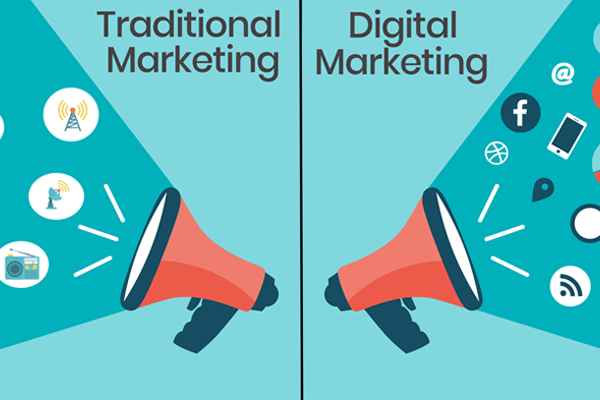An online marketing mix is a strategic combination of organic and paid marketing channels to promote your brand awareness, visibility, and ROI. However, businesses struggle to identify which marketing medium to adopt or whether they should leverage the power of both.
Usually, startups and small scaled businesses find investing in paid marketing strategies challenging. In contrast, medium to large-scale businesses tries to strike an optimum balance of both in their marketing mix.
Companies can hire an online marketing expert or work with an agency for digital strategies. In this article, we’ll learn about the difference between both marketing channels, how to integrate both and which marketing medium you should adopt as a business.
What is Organic Marketing?
Organic media marketing refers to promoting your brand and its offering without spending money on social platforms like Instagram, Facebook, Twitter, TikTok, LinkedIn, Pinterest, and many more. You can post pictures or video content on these socials and share with your network, advocating brand awareness. The strategies you execute in organic media marketing are also DIY marketing strategies because you don’t have anyone else to help you. Social platforms are not just one way to enjoy the benefits of organic marketing; you can also optimize your site as per the algorithms of the respective search engine. This process is called Search Engine Organization.
As an online business owner, when you post organically on your communication channels, you can expect the target audience who will see it includes the following:
-
A portion of your followers
-
Followers of the people who follow you
-
people following hashtags that you have incorporated into your post
It might seem easy at the moment, but in reality, organic marketing creates a barrier when you have to market your brand to the masses because of the social platform’s algorithms.
For startups, organic marketing is one of the best ways to:
-
Establish their brand personality and values
-
Build and maintain relationships
-
Engage customers at each stage of their buying journey
-
Facilitate their customers with impeccable and prompt customer service
What is Paid Marketing?
Paid marketing refers to marketing your brand and its offerings on various platforms by paying money. It is synonymous with advertising. Since it is a paid marketing medium, you get to select your target audience, time, duration of the ad, keywords, and most importantly, Budget.
Paid marketing works well for both B2B and B2C businesses. Once you have set up your paid marketing ad campaign, you can wait and check the analytics for the ad campaign’s performance. If your advertising campaign is not performing as expected, you can alter the settings and preferences to boost conversions.
Brands leverage paid promotion techniques to:
-
Promote brand awareness and gain new followers
-
Market their new arrivals, discounts, offers, and events
-
Drive conversions
-
Generate leads
Organic vs Paid Marketing
While organic marketing generates traffic on your website over time, paid marketing leverages paid methods to instantly target, reach, engage, and convert audiences.
Inorganic marketing strategies include paid social media ads, paid search ads, display ads, video ads, and sponsored posts. With the help of paid media marketing, you can micro-target your segmented audience and effectively reach them to advocate your brand. At the same time, organic marketing does not require paid marketing strategies. It is more of a DIY marketing strategy.
The goal of both marketing strategies is quite different. Organic media focuses on attracting an audience and enhancing brand visibility, but paid media and search focus on converting visitors to customers.
You can measure paid marketing campaigns’ performance but not organic media strategies.
Now the question arises of how to integrate both marketing strategies effectively to power your marketing efforts.
How To Integrate Paid and Organic Marketing in Your Online Marketing Mix?
Here is how you can integrate both marketing mediums to boost conversions and enhance brand visibility and awareness.
1- Not All Promotional Posts Need To Be Advertise
Only pay for advertisements when they can help you meet your KPIs and ultimately reach your organizational goals. Ads aren’t always the answer on social. For example, when announcing anything new like partnerships, pivots, iterations to your flagships, etc., only your existing followers need to be informed.
2- Boost Your Best Organic Content
The content that you have already created is doing well with organic marketing. It is time to advertise it for new eyes to see and become your loyal customers. For example, you can start by allocating a separate budget to the top weekly or monthly posts whenever you run your analytics report. Don’t just focus on likes but also on conversions, profile views, etc.
3- Optimize Your Content Using A/B Testing
Before you allocate your paid media budget to a single ad, run versions with a smaller audience to see if it’s good. Also, test your CTAs, copywriting, visuals, advertisement placement, format, and audience targeting. You may also test it among multiple and varied audience demographics (age, location, etc.) before you commit to a more big spend.
4- Target Your Advertisements For a Similar Audience As For Your Organic Search
The more you’ve grown your online brand presence organically, the more data you have about your customers. How old are they? Where do they live? What problems are they facing in their lives? What are they interested in? How are you helping them?
Capitalize on this information as you build your ads. This is where all your complex work building quality relationships with your audience pays off.
5- Leverage Retargeting Ads to Stay Connected To Your Organic Audience
Retargeting advertising campaigns can be highly effective at a comparatively low cost because you’re reaching out to people already aware of your online business. Usually, these people have organically come to your social media handles or web presence.
The idea is that they require a reminder to come back and convert, and the right ad can compel the ultimate purchase.
6- Look At Your Data and Measure Your Results
Watching a campaign flop is equally painful irrespective of whether organic or paid. However, if you pay attention to your integrated analytics tools, they’ll tell you where to make changes to get better results.
Conclusion
Follow the tricks mentioned above to Integrate your paid and organic social strategies to build and strengthen connections with existing consumers and reach new ones.
Madavi can help you reach your micro-targeted audience by setting up the most result-driven advertisement campaign and optimizing your website for the best organic reach to help your business reach new heights. With a systematic and strategic integration of paid media search and organic marketing, Madavi will make working with an agency for digital strategy stress-free.



